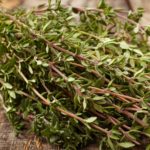
Rosemary
Scientific classification
Name: Rosemary
Scientific name: Salvia rosmarinus
Kingdom: Plantae
Class: Equisetopsida
Subclass: Magnoliidae
Order: Lamiales
Family: Lamaciaeae
Genus: Salvia ->also known as Rosmarinus officinalis
Habitat: Rosemary is native to the Mediterranean region. It does not like too much drought. It grows in well-drained, calcareous soil. It is important for the soil to retain moisture.

Therapeutic effects
Organs involved: respiratory and nervous systems
Effects : Astringent, anti-inflammatory, antioxidant, healing, mucolytic, general stimulant
Active ingredients: Essential oil (cineol -> 1,8-cineol, camphor)
Flavonoids, tannins, diterpenes, rosmarinic acid, rosmaricin
Indications :
For internal use: Dry coughs, bloating, headaches, concentration problems, hypotension
-> in herbal tea form
External use: Rheumatism: osteoarthritis, arthritis.
Muscle pain, hair loss in men and women (as essential oil).
Side effects: Allergy to active substances
Contra-indications: Pregnant women, nursing mothers (essential oil)
Parts used : Leaves
Galenic forms : Herbal tea (infusion), ointments or creams, essential oil for external use, tincture.
Posted in December 2023
Sources: Creapharma / Wikipedia
_________________________
DOWNLOAD OUR FREE DOSSIER
You will soon be able to download our free dossier (updated 28.09.24)
©photos taken from Canva.com for our file













